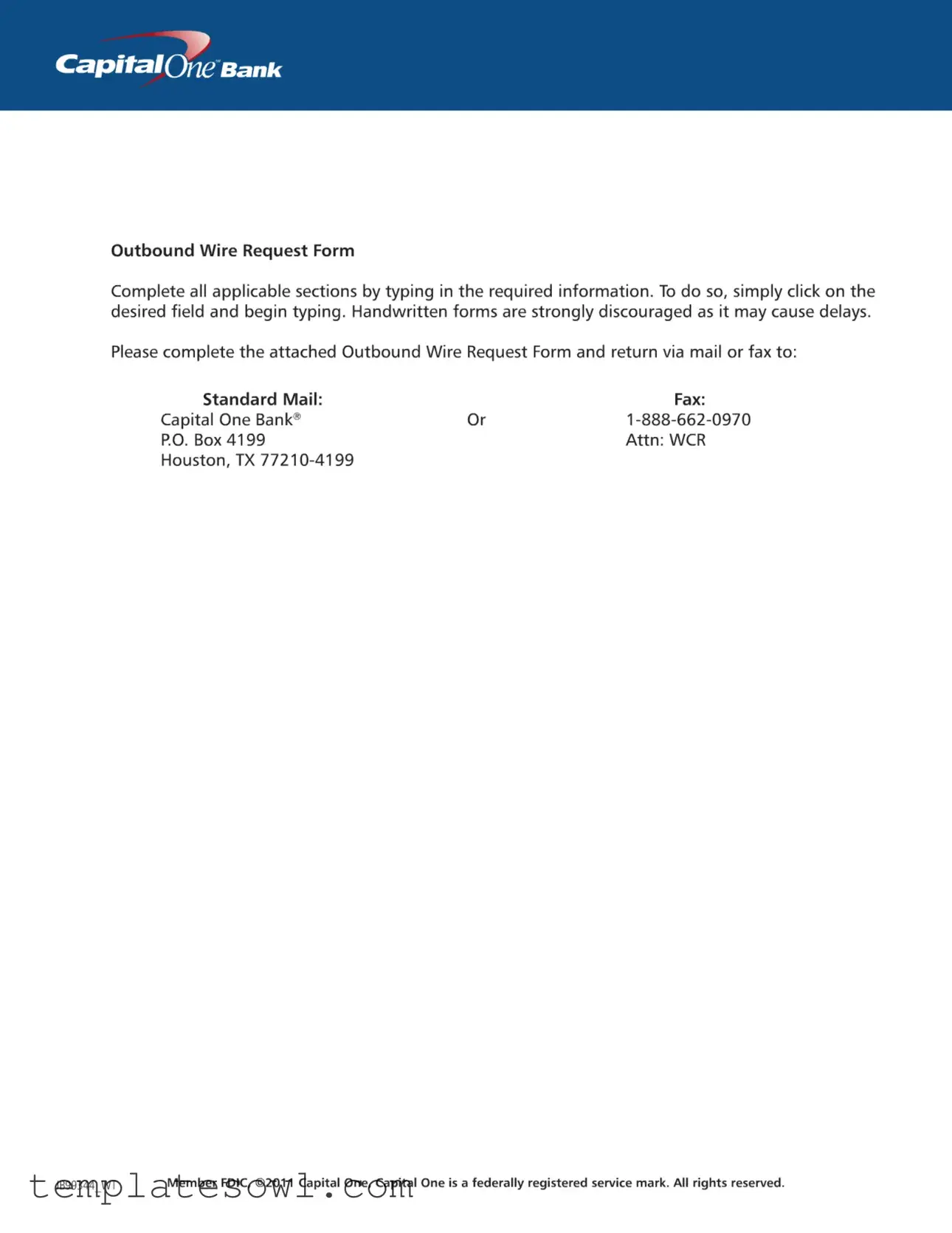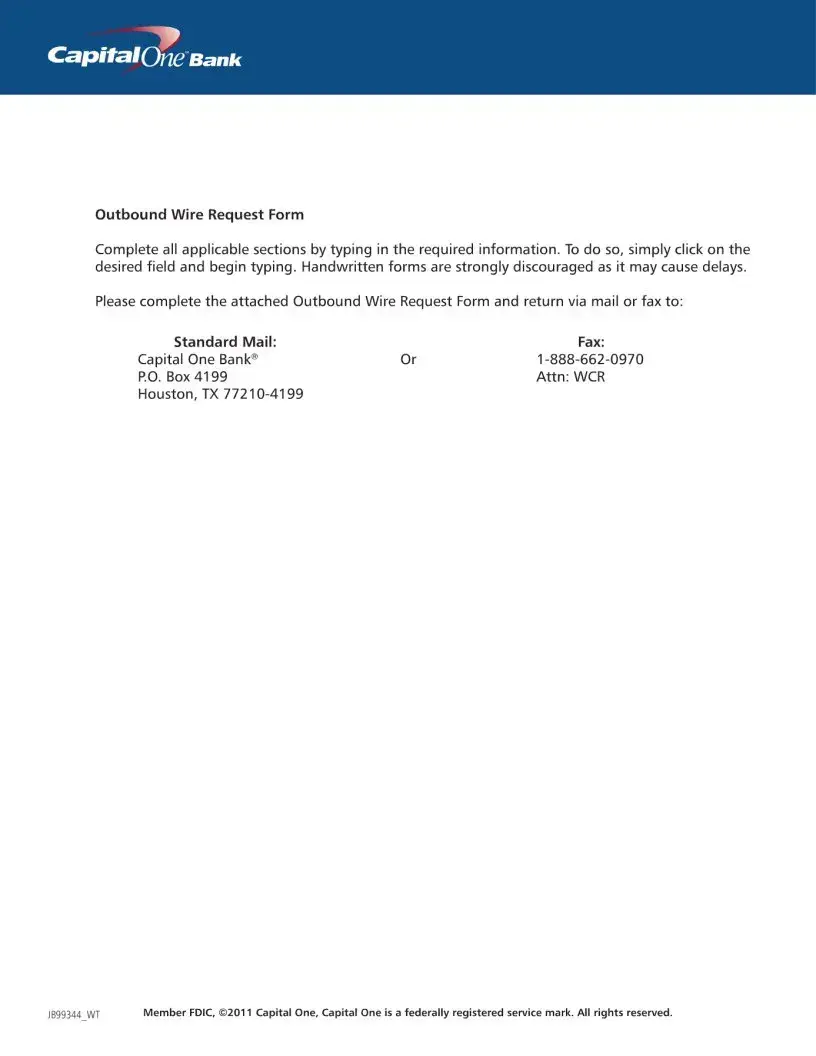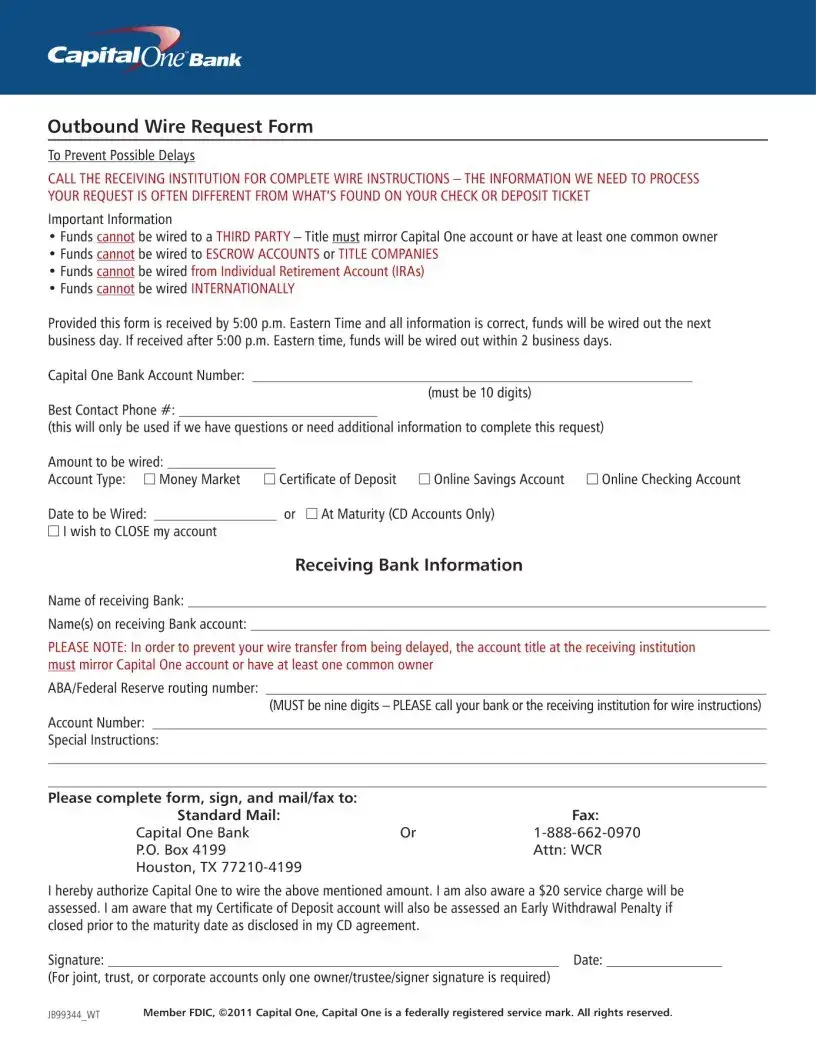What is the Capital One Wire Transfer form used for?
The Capital One Wire Transfer form is used to request the transfer of funds from a Capital One account to another institution. It is essential for clients who need to move money quickly and securely. The form requires specific information to ensure that the wire transfer is processed correctly.
How do I fill out the Capital One Wire Transfer form?
To fill out the form, you need to enter the required information in the designated fields. It's recommended to do this electronically rather than by hand to avoid potential delays. Handwritten submissions often result in errors, which can lead to processing issues. Ensure that you complete all applicable sections before submitting the form.
What is the procedure for submitting the wire transfer request?
Once the form is completed, it can be submitted either by mail or by fax. The mailing address is Capital One Bank, P.O. Box 4199, Attn: WCR, Houston, TX 77210-4199. If you choose to fax the form, use the number 1-888-662-0970. Make certain you do this before the 5:00 p.m. Eastern time deadline for timely processing.
What information is required to complete the form?
The form requires your Capital One account number, the amount to be wired, the account type, the date for the transfer, and detailed information about the receiving bank, such as the bank's name and the ABA routing number. It's important that the name on the receiving account matches the name on your Capital One account or that there is at least one common owner.
Are there any restrictions on wire transfers?
Yes, there are specific restrictions. Funds cannot be wired to third parties, escrow accounts, or title companies. Additionally, transfers cannot be made from Individual Retirement Accounts (IRAs) or for international wire transfers. These rules are in place to ensure compliance with banking regulations.
What happens if I submit the form after the 5:00 p.m. Eastern Time deadline?
If the form is submitted after 5:00 p.m. Eastern Time, the funds will not be wired out the same business day. Instead, they will be processed within two business days. Submitting the form on time is essential to ensure a prompt transfer of funds.
Is there a fee associated with the wire transfer?
Yes, there is a $20 service charge for processing the wire transfer. Additionally, if you are closing a Certificate of Deposit account before its maturity date, you may incur an Early Withdrawal Penalty as outlined in your CD agreement. This information should be considered when planning your wire transfer.


